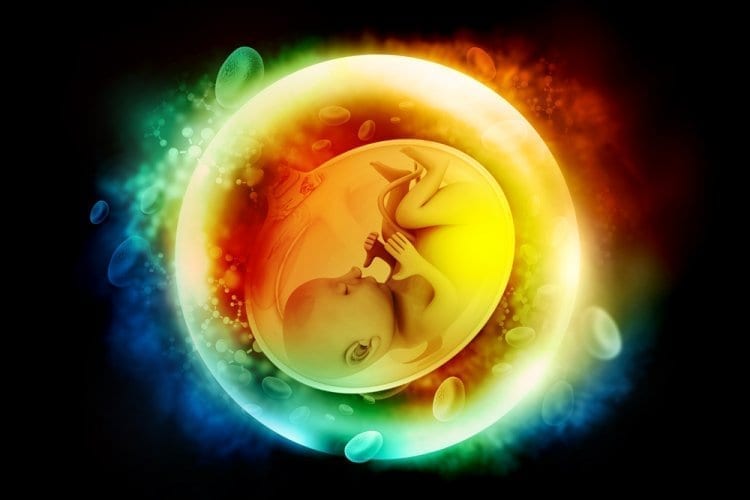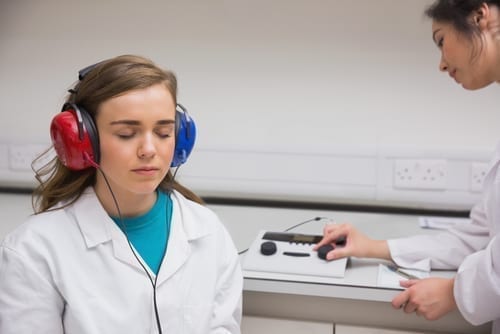After years of waiting, my husband, Andrew, and I welcomed our beautiful daughter, Kenley, into the world a month earlier than expected in April 2012. She arrived after a difficult pregnancy, weighing in at five pounds, one ounce. I was thrilled to finally be a mother.Our nightmare began when our bundle of joy was only three months old. I was away on a business trip—the first I had taken since she was born—when my husband called me after what should have been a routine diaper change. The baby wasn’t crying anymore, but he was concerned because he’d heard a strange pop when he lifted her tiny legs. “Bria,” he told me anxiously over the phone, “she started to make a fuss, but as soon as I picked her up, she stopped. She seems fine now, but I can’t get that sound out of my head.” He also mentioned that the baby was drawing her leg up as if it hurt, so I told him to wait a few minutes to see if she relaxed it. Thirty minutes later he called me back and said, “She looks comfortable, but the area still seems tender.” Then he repeated that he was still worried about the sound he had heard. We decided that it was worth investigating for the sake of my husband’s peace of mind. “Just take her to the hospital to make sure that everything’s all right,” I advised him. And so it came about that my husband, motivated by fatherly concern, sought medical help for our daughter—only to be accused a few hours later of abusing her. When the doctors took X-rays of the baby, they discovered an astounding nine fractures! My husband, who had held her and comforted her throughout all of the testing and prodding, was immediately suspect.

Shocked and in a state of disbelief, I quickly changed my travel plans and caught the last flight out of Chicago, arriving in Dallas at two a.m. I went straight to the hospital, where I was greeted by Child Protective Services. “We’ve already contacted the police, Mrs. Huber,” they informed me. My husband and I would be interviewed by the police the next morning. We couldn’t believe what was happening. “You go on home,” I told my husband. “I’ll spend the night here with Kenley.” The following morning he was contacted and told to come down to the police station immediately. The interview lasted four hours, after which he was informed that he would not be allowed back into the hospital, where Kenley and I were waiting for him. He was devastated. A few hours later it was my turn to be interviewed. By the time I walked in, I was sobbing hysterically. By then my parents had arrived in Dallas and were at Kenley’s bedside. She would stay in the hospital for the next three days. I was in total shock; I still have very little recollection of that time period. When I learned that my baby had nine fractures and that she had been “abused” systematically—her injuries were all in various stages of healing—I felt like a machine, simply processing the information numbly. Having been married to my husband for the past six years, it didn’t make sense that he could hurt the baby we so badly wanted. But it was all being presented to me as fact, and in my heart of hearts even I questioned his innocence. Then it occurred to us that there must be something medically wrong with our child. It would take us months to figure out what it was. Two weeks later, on my thirtieth birthday, Andrew was arrested and charged with second-degree felony injury to a child.
He was in jail for 36 hours before we were able to bond him out. He wasn’t allowed to see Kenley at all for the next four months. My husband says that he lived for the cell-phone pictures I sent him; they kept him going until the end of December, when hewas finally granted court-appointed supervision. We had to have someone come to the house for an hour so he could see his own daughter. Throughout this ordeal, Kenley and I were living on our own. There were times when I went to stay with my parents for some hands-on help (by then I had gone back to work and was paying for child care), but it was pretty much just the two of us. It was very difficult being separated from my husband. He was being put through the wringer, and I couldn’t even be there for him. Things continued in this vein until April 26, at which point we no longer had to pay for a court-appointed supervisor and I was allowed to supervise my husband’s interactions with his child. Over the course of these several months we went to nine different doctors in five different states, generating piles of paperwork but not solving the mystery. No one could figure out what else other than violence could have caused Kenley’s fractures. There were inconsistencies in what the radiologists were seeing, preventing them from making a definitive diagnosis.

Osteogenesis imperfecta, “brittle bone” disease, is often considered for unexplained fractures. A report from an independent specialist found evidence of “demineralized” bones, suggesting an underlying nutritional or metabolic disorder. At one point her blood work showed that she had a vitamin D deficiency. Then we learned that she had problems metabolizing vitamin D properly. She wasn’t absorbing it in a way that would strengthen her bones. But we still couldn’t figure out what was fundamentally wrong. We were working with a local criminal attorney here in Dallas who was very well-respected. He thought that the whole thing was ludicrous and fought for Andrew’s rights as a father. As a family man himself, he wanted to take on the case and was very optimistic. My husband had submitted to polygraph and various other tests and had passed with flying colors, so our lawyer was confident the charges would be dropped. He was very surprised when Andrew was indicted by the grand jury nine months into our ordeal. The situation had clearly spiraled out of control. Then one doctor came to the rescue in an entirely unexpected way. One December morning, Andrew and I found ourselves in my obstetrician’s office. I had just suffered a miscarriage, and the three of us were crying together. She had gotten to know my family well throughout my difficult pregnancy with Kenley and the events that followed. Andrew had made quite a positive impression on her; she told us that only five percent of fathers never miss an appointment with their wives, and he was one of them. She asked our permission to tell our story to a colleague as it sounded very similar to what the doctor’s nurse had experienced. The first phone call I got from Rana Tyson changed my life.
Rana, a labor and delivery nurse, started asking me lots of seemingly random medical questions: “Do you faint easily? Do your joints dislocate often?” I couldn’t believe how this stranger was putting together the many crazy symptoms I had been living with my entire life. “Honey,” she told me after hearing my answers, “our stories are identical.” As she went on to relate, Rana and her husband, Chad, had lost custody of their twin baby girls after doctors at Children’s Medical Center discovered they had numerous unexplained fractures. A few weeks after they were born, Chad was watching the twins while Rana rested. He was changing one baby’s diaper when she drew her leg up to her chest and seemed to be in great pain. A trip to the hospital revealed that both twins had multiple fractures. To their utter shock, the Tysons weren’t allowed to take their babies home. The couple’s parents were given temporary guardianship of their three daughters for five months. The Tysons eventually found Dr. Golder Wilson, a Dallas-based geneticist who diagnosed the twins with a connective tissue disorder called Ehlers-Danlos, or EDS, in which the body’s connective tissue is congenitally weak. It is caused by a defect in the structure, production or processing of collagen or the proteins that interact with it.
In someone with EDS, the collagen bonds are unusually loose and can break easily, making a person prone to fractures and causing him to bruise easily. Twenty minutes into the phone call, Rana and I were both crying. I knew this was it! I’d never heard of Ehlers-Danlos syndrome before. Even though I’d done a ton of research, no one had mentioned it, nor had I come across it in anything I’d read. Our pediatrician, who wrote a character reference letter for us, had never noticed anything out of the ordinary; he missed it, as did all of the other doctors we saw after my husband’s arrest. In his defense, babies at such a young age have very pliable bodies. In testing Kenley’s range of motion, the doctor hadn’t been able to tell that her hips were actually dislocating! Even if she’d been crying during the exam, it wouldn’t have raised a red flag since infants cry for a multitude of reasons. Because the underlying supportive structure of the body is fragile, including the bones, simple routine handling of a baby with the disorder can lead to a fracture. There are several types of Ehlers-Danlos with a wide range of symptoms, some more painful and restricting than others. It can even be life-threatening if the blood vessels are involved; most EDS sufferers, however, have a normal lifespan. According to the Ehlers-Danlos National Foundation, 1.5 million people around the world suffer from the syndrome. While the subject is covered briefly in medical school, most doctors never encounter it in real life with the exception of geneticists (it’s a genetic disorder), rheumatologists (it affects the joints), and endocrinologists (the endocrine system is also affected). Yet I had taken Kenley to several endocrinologists and they had all missed it! In fact, I spoke to a few of them afterward and they apologized to me. That’s why awareness is so important.
Armed with this new information, I found out that I have the disorder as well. I had always been an athlete and had sustained many fractures and dislocated my shoulders many times. But I’d always chalked it up to running 80 miles a week and putting a lot of stress on my body. There were also other bizarre symptoms that I’d never linked; for example, I faint very easily, I’d had several miscarriages, and I had gone into preterm labor with Kenley. I also have blue sclera, meaning that the whites of my eyes have a blue tinge. Not until I spoke to Rana Tyson did I realize that these symptoms were all related. Kenley was officially diagnosed with EDS in July. While we were relieved to have proof that Andrew wasn’t abusing our daughter, we struggled with the knowledge that something was wrong with her. We had to learn how to care for her properly, handle her carefully and strengthen the muscles around her joints. Kenley is also learning how to swim, which will help. After we received my diagnosis of Ehlers-Danlos syndrome as well as Kenley’s diagnosis of Ehlers-Danlos syndrome coupled with Vitamin D deficiency, the supporting letters we received from two different doctors stating Kenley’s fractures were caused by her medical condition were ultimately what got the DA to drop the case. That diagnosis took place after Andrew was indicted but before a trial date was ever set. When the case against my husband was finally dismissed on October 2, he was permitted to move back in with the family so that we could resume our lives.
My husband had essentially missed the entire first year of our daughter’s life. Kenley was an extremely cherished baby. It had taken a long time for me to become pregnant. I had suffered two miscarriages and was on bed rest from the 24th week of pregnancy until her premature birth. Ten days after the charges were dropped, I started having seizures. We don’t know if I will be able to have more children. Did I ever really suspect my husband of being guilty? It was ingrained in me that I had to do my due diligence. In terms of priorities, I’m a mother before I’m a wife. I had to put aside my feelings for him and make sure that my life with him wasn’t a lie. But after objectively examining the facts, none of it made any sense. I’d been home with the baby full time until the day the fractures were discovered. We also had a nanny for those rare days when I had to go out. The nanny said she never saw evidence of abuse either. It just couldn’t have been my husband. The experience really changed our lives. Andrew had always taken care of me; it was hard for him to be forced into a role where I had to take care of him. There are a lot of people going through similar situations right now. It is extremely sad to see how prevalent such accusations are. And some people are going through even worse challenges than we did. I recently spoke to one mother who’s on her fourth attorney. One of the problems is that many doctors are so used to dealing with child abuse that they can’t see anything else. They ignore the fact that it’s a well-adjusted family sometimes don’t consider that there might be a medical issue involved.
Some of them see abuse every day, so they assume you’re just another statistic. This past November, Rana and I and another mother in the Boston area whose husband is still awaiting trial started an organization called Fractured Families, which is dedicated to helping others who have been wrongfully accused of child abuse. We aren’t attorneys or doctors; we’re just mothers who have been through a nightmare and would like to share the helpful knowledge we’ve gleaned. We are very clear that our only purpose is to lend support and connect people to doctors and lawyers. Our goal is to reunite families that have been ripped apart by misdiagnosed abuse, and we have no intention of covering up for those who are really abusing children. We will connect people with physicians who can make those determinations, because we aren’t qualified to do so. Since we and the Tysons went public, we’ve helped many others who were searching blindly for answers. We’ve heard from dozens of families whose kids had vitamin D deficiency, rickets and/or EDS. One couple were reunited when they cited our case to shed light on the fact that misdiagnoses occur. That brought us a lot of healing. If we can shorten the time someone spends in purgatory, it lends purpose to our pain and helps me sleep at night, knowing that there’s a reason we went through this. Kenley just turned two. She’s a ball of energy and doing really well. She’s hitting all of her milestones and talking up a storm.We are very thankful. She is our everything, lighting up the room when she walks in, and everyone who meets her agrees. We are fortunate to have discovered that she suffers from this disorder at a young age so that we can take her to the very best doctors and help her lead as healthy a life as possible. Without this diagnosis we would not have known why she was having seizures, nor would we be able to guide her through the other symptoms she will invariably experience as she grows older. This ordeal has been extremely stressful. It was tough on our marriage, but there is now a bond between us that can never be severed. As a family, we know that no one can break us.





